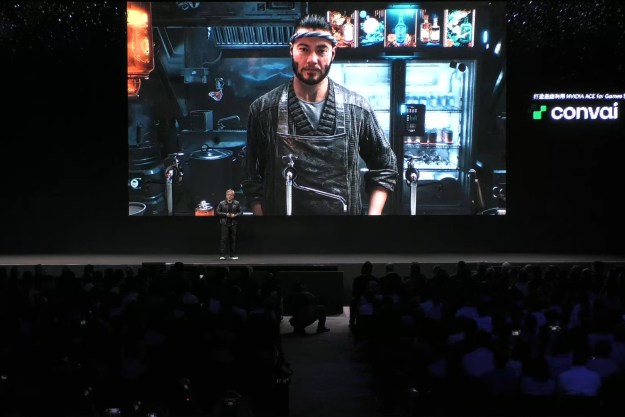Nvidia’s Shield is coming to the living room. Reborn as an ultra-thin micro-console that costs $200, the Android-powered device has a Tegra X1 graphics processor at its heart. For tech geeks, that means a GPU built on the same Maxwell architecture used for Nvidia’s high-end PC graphics cards. It’s powerful enough to support streaming content from both 4K video sources and video games, via Nvidia Grid.
The small console — 5.1-inch x 8.3-inch x 1-inch, weighing 1.4 pounds — is built to either sit flat or, with an included base, stand upright. The package comes with one of Nvidia’s wireless console-style controllers as well; it’s the same one that works with Shield tablets. The console can pair up to four controllers at once for local multiplayer gaming.
Nvidia expects to support more than 50 games at launch, including new and popular titles like The Witcher 3 and Borderlands: The Pre-Sequel. The Shield also supports Nvidia Grid, a streaming service that also launches in May with both free and paid components. It’s not clear how everything works and what the cost will be, but it’s a similar concept to OnLive, with games streamed in from data centers.
What you’re really looking at here is a competitor to the likes of Amazon’s Fire TV and Razer’s Forge TV. We’ll be getting a closer look at the living room-friendly Shield soon, so stay tuned for more.
Editors' Recommendations
- Samsung’s new 98-inch DU9000 4K TV is just $4,000. Can it beat TCL and Hisense?
- Belkin drops a $50 mount for iPhone video calls on Apple TV 4K
- This new retro console will let you play Nintendo 64 games in 4K
- Vizio’s new Quantum 4K QLED TVs hit 75 inches for $699
- TCL’s latest 98-inch 4K TV comes in at a great price



